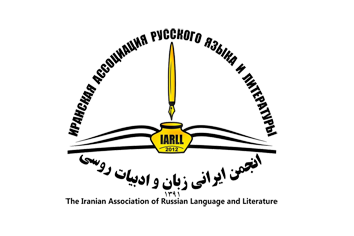PECULIARITIES OF CONCEPTUALIZATION OF ART IN L.N.TOLSTOY'S PUBLICIST WRITING
DOI:
https://doi.org/10.61186/iarll.20.119Keywords:
Art, Consciousness, Conceptualization, Journalism, Leo TolstoyAbstract
The article deals with the conceptualization of art in the works of Tolstoy in his publicist writings. The conceptualization is a complex amalgam of ordinary and scholarly consciousness. Tolstoy presents his point of view on the basis of the extensive theoretical and empirical material, theories of love, non-resistance to evil by violence, the meaning of human life, the structure of society. The main means of explication of knowledge include synonymy, antonymy, comparison of related concepts, highlighting the key differential features, and metaphorization. Tolstoy understands art as an activity, a pastime, a spiritual entity. The thinker organically uses rational and emotional tactics of narration. The outcome of Tolstoy's thinking is a classification of art built on the principle of dichotomy: art is divided into true and false, and the true one, in turn, is divided into religious and common (worldly). The conceptualization of art is linked to the identification of its main features: expression of the law of universal love, uniqueness, contagiousness, clarity and simplicity, and its functions: to be a means of communication, to suppress low feelings and develop high ones, to make a person morally strong. The conceptualisation of art has been found to have an explicit vectorial marking, directed towards the future.
Extended abstract:
The article deals with the conceptualisation of art in Leo Tolstoy's publicistic works. Conceptualisation is a complex amalgam of ordinary and scientific consciousness. On the one hand, the interpretation of art is characterised by naivety, by simplicity of interpretation. Tolstoy assumes the role of a simple, poorly educated person who explains the essence of art. On the other hand, Tolstoy sets out his viewpoint on the basis of extensive theoretical and empirical material, on the theories of love, non-resistance to evil by violence, the meaning of human life and the structure of society that he created. In analysing the various aesthetic theories, Tolstoy singles out in them the main different attributes of art - beauty. The choice of this criterion, according to the thinker, is linked to the spiritual degradation of people. In pondering the essence of beauty, Tolstoy comes to understand that beauty is that which is pleasing, that which lies on the surface, that which brings pleasure. However, this criterion is subjective, as some may like one thing and others like another. Tolstoy considers the criterion of beauty to be wrong. Beauty and delight, according to Tolstoy, cannot be the criteria of art. The crisis of art was connected with the change in people's religious consciousness and the loss of the sense of nationality.
Tolstoy views art as an indispensable attribute of human life; it has a variety of forms, without which he cannot imagine his existence. Tolstoy conceptualises art by juxtaposing related phenomena. He distinguishes between art and craftsmanship, believing that real art is different from craftsmanship in its uniqueness, irreducibility and ability to convey the feelings of the creator.
Importance to people, comprehensibility, and the artist's intrinsic need to express him/herself - these are the conditions for the emergence of works of true art.
The main means of explicating knowledge include synonymy, antonymy, comparing related concepts, highlighting key differential features, and metaphorization. Tolstoy understands art as an activity, a pastime, a spiritual body. The thinker organically uses rational and emotional tactics of presentation. The result of Tolstoy's thinking was a classification of art based on the principle of dichotomy: art is divided into the real and the false, and the real in turn into the religious and the mundane (world-wide). Tolstoy includes adherence to ritual, patriotism and sensuality among the traits of false art. Comparing true and false art, Tolstoy resorts to metaphors of the harlot and the virtuous wife. True and false art differ in results. True art makes one strong, false art makes one weak. Tolstoy refers to religious art as the art of the future. The thinker ascribes to it the following features: clarity, simplicity and brevity.
The conceptualisation of art is linked to the identification of its basic attributes - expression of the law of universal love, uniqueness, contagiousness, clarity and simplicity - and functions: to be a means of communication, to suppress low feelings and develop high ones, to make a person morally strong. The conceptualisation of art has been found to have an explicit vectorial marking, directed towards the future.
Art acts as a means of communication and should therefore unite people. Tolstoy sees in this function of art its progressive significance. This property unites art and science. Tolstoy considers that science can open up new ideals for art.
Downloads
Published
How to Cite
Issue
Section
License
Copyright (c) 2022 Issledovatel'skiy Zhurnal Russkogo Yazyka i Literatury

This work is licensed under a Creative Commons Attribution 4.0 International License.
![]()
"Creative Commons Attribution 4.0 International (CC-BY 4.0)"


